Four Billion People Face Severe Water Scarcity
Cities, farming regions, and arid lands are most affected, study finds.
By Brett Walton
Circle of Blue
Two-thirds of the planet’s population, or 4 billion people, lives at least one month per year with water scarcity, according to the most detailed water scarcity assessment to date.
Previous studies — which estimated between 1.7 billion and 3.1 billion in water-scarce areas — were too broad for an accurate depiction of the problem, the study claims. Those assessments looked at annual averages over whole watersheds and did not account for ecosystem needs.
The study from researchers at the University of Twente, in the Netherlands, looked more closely. They used monthly averages of water availability, analyzed water supply and consumption at a scale that included municipal, industrial, and agriculture data, and apportioned water to maintain ecosystem health.
The researchers defined water scarcity as consuming more fresh groundwater and surface water than is available, after subtracting upstream use and water required for ecosystems, estimated at 60 percent to 80 percent of natural runoff.
Under these conditions many more people than previously thought live with water scarcity at least one month per year.
Half of the 4 billion with monthly water scarcity live in India and China. Other countries with large portions of their populations facing water scarcity include Bangladesh, Pakistan, Nigeria, and Mexico. In the United States, severe water scarcity affects California, Florida, Texas and other southern and western states.
In some places, water scarcity is perpetual, not intermittent. The study found that water supplies are insufficient year-round for half a billion people, most of whom live in India and Pakistan. Saudi Arabia and Yemen are in a rare position — two countries in which the entire population is classified as having year-round water scarcity.
Despite its depth, the study did not account for everything. The researchers did not look at how manmade alterations to water flows — reservoirs, desalination, or transfers of water between river basins — decrease or increase water scarcity. Other studies, including one published in 2014, have shown that transfers help cities alleviate water stress.
Figure 1. Quarterly averaged monthly blue water scarcity at 30 × 30 arc min resolution.
Water scarcity at the grid cell level is defined as the ratio of the blue water footprint within the grid cell to the sum of the blue water generated within the cell and the blue water inflow from upstream cells. Period: 1996–2005.
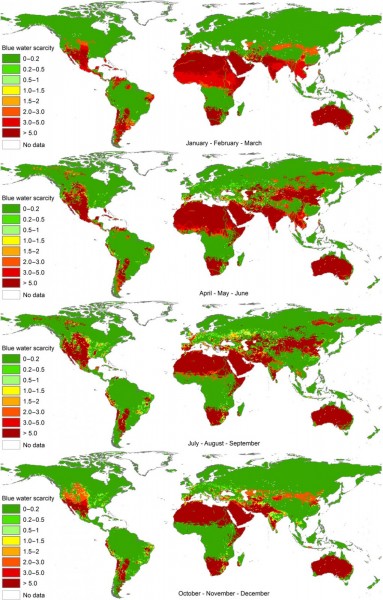
Figure 2. Annual average monthly blue water scarcity at 30 × 30 arc min resolution. Period: 1996–2005.
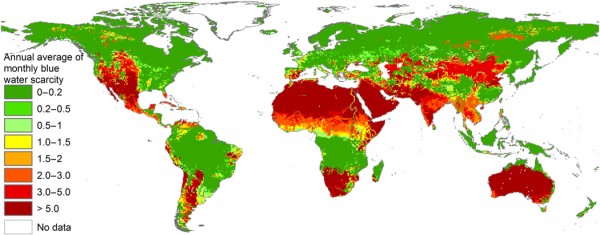
Figure 3. The number of months per year in which blue water scarcity exceeds 1.0 at 30 × 30 arc min resolution. Period: 1996–2005.
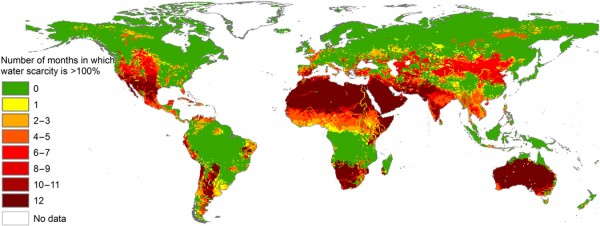
Complete report with methodology and interpretation. (new window)
Brett writes about agriculture, energy, infrastructure, and the politics and economics of water in the United States. He also writes the Federal Water Tap, Circle of Blue’s weekly digest of U.S. government water news. He is the winner of two Society of Environmental Journalists reporting awards, one of the top honors in American environmental journalism: first place for explanatory reporting for a series on septic system pollution in the United States(2016) and third place for beat reporting in a small market (2014). He received the Sierra Club’s Distinguished Service Award in 2018. Brett lives in Seattle, where he hikes the mountains and bakes pies. Contact Brett Walton



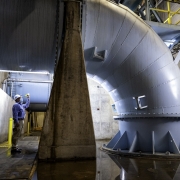
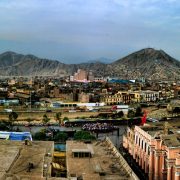

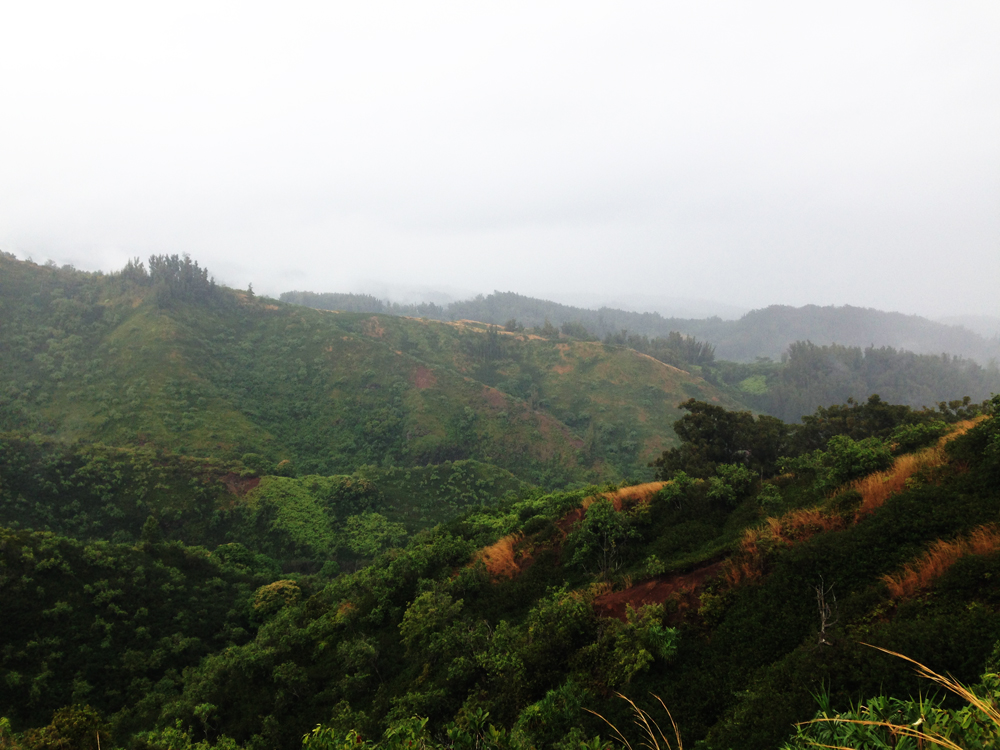

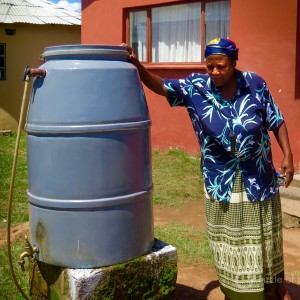

Leave a Reply
Want to join the discussion?Feel free to contribute!